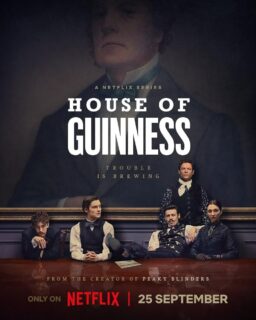CANNES — The riots were Wednesday. Kinski was Thursday. Relative calm returned by the weekend. But it is safe to say that few entrances in the history of the Cannes Film Festival have rivaled the reception of Nastassja Kinski when she arrived here for the premiere of her latest film, the luridly stylistic “The Moon in the Gutter.” The film was not a success, but Kinski was a triumph — not because of her performance, but because of herself. Has there ever been an actress in the history of the cinema who has so fascinated so many people without yet having appeared in a single truly great movie?
The day began early, with the sun still rising over the old harbor of Cannes. Municipal workers with buckets and brushes were scrubbing away the political slogans sprayed all over the Palais des Festivals the day before by rioting medical students. Meanwhile, the world’s film press was having a quiet little riot of it’s own, trying to get into the Palais for the early critics’ screening of “The Moon in the Gutter,” the second film by Jean-Jacques Beineix — the young man whose “Diva” was the most successful French film in United States box office history.
There was not enough room in the two-thousand-seat press screening theater, and so the movie was moved to the grand auditorium, where three thousand or more journalists, clutching their credentials like the keys to the palace, shoved in to see a melodramatic story of love, lust, doom and obsession. The movie starred Gerard Depardieu, the brawny French star, as a dock worker haunted by the death of his sister, who cut her throat after being raped. In a sleazy waterfront dive, Depardieu meets a rich young playboy and, through him, the playboy’s passionate sister — played by Kinski, of course. Depardieu lives in a Cannery Row flophouse with a tempestuous prostitute (Victoria Abril) and assorted other flotsam, and cannot understand why Kinski returns to the docks night after night in her red Ferrari convertible to offer him love and ecstasy.
If this description sounds a little overblown, the film itself is utterly without restraint. It is one of the most flat-out exercises in romantic excess I have ever seen, a poem made from neon, jazz, blood, revenge and moistly parted lips. And Kinski throws herself into this cauldron with joyous abandon, providing the kind of uninhibited, risky, overblown performance that legends are made of.
“The Moon in the Gutter” is not a successful film, and it was greeted by enthusiastic boos at the morning screening, but it is certain to further the legend of Kinski – who, at twenty-two, managed to get herself on the covers of Time, Playboy and Vogue in the same month for three different reasons (she is news, she is sexy and she is the hottest face in the world).
After the screening, there was another near-riot at the press conferences. Kinski, Beineix and Abril were late in arriving. The still photographers and television cameramen commandeered the first three rows, stood on the chairs and each other’s shoulders and waited grimly, ignoring the cries of “Assiz!,” which is how the French say Down in front!” A spokesman for the festival arrived briefly to say that the Beineix party had disappeared — lost apparently, in the labyrinth of the new festival palace. Then they arrived to a great ovation, thunderous roars of “Assiz!,” and a bewildering wall of flashguns.
All eyes were on Kinski. Beineix, seated next to her, was discovering what it feels like to have the attention of the world focused nine inches to the left of your ear. Kinski wore a simple black dress with a scooped-out white shawl collar. It was at once vaguely ecclesiastical and chastely suggestive. She wore a stainless steel Tiffany wristwatch with a steel expansion band, a ring from the trinket counter of a dime store and a smile that made it clear she was not bored by her first Cannes press conference. Some young actresses pretend to be blase in the face of great attention. One of the charms of Kinski is that she is so obviously enjoying the limelight.
The first questions, gloomy ideological ones, were directed at Beineix, who defended the purity of the image over the corruption of dialogue, and said he was not in the least disturbed by the people who walked out of his movie, because his movies were made for the people who stayed. Faultless logic. Finally, somebody observed that Kinski’s entrance in the movie had been accomplished with dramatic use of light, shadow, closeup and passionate classical music, and said that all her directors seemed obsessed with her, then asked her if she hoped someday to make an ordinary entrance and play an ordinary person. Her response was a breathless speech, delivered in a clear, loud, passionate voice:
“What does it mean, ordinary? We sleep, we dream, and our dreams are as real as real life. We must not deny our dreams. Obsession is the main reason for our living. That’s what I live for. The other things — I wake, I sleep, I work, I smell — that’s what we all live for. If a director shares my obsessions, that means he sees through me. My role is always someone ready to die for a moment of emotion.”
I was not quite sure what that meant, but I got the feeling, all right, and I got the message: After a generation of actresses trained to analyze their roles and speak intelligently about them, here is the Isadora Duncan of movies. Kinski always was in motion on the stage, even while other people were talking. She lit cigarettes, puffed a few times, stubbed them out and leaned back in her chair to catch the eye of Abril, her co-star, so they could wink and giggle like two school girls during a boring lecture.
An hour later, I joined Kinski for lunch on a private terrace of the Gray d’Albion Hotel. I do not remember a single thing about what we ate, except that the miniature bird eggs reminded her, for some reason, of her boyfriend. I struggled to keep up with the torrent of her declarations. I remember telling her at one moment that I thought she was a romantic. “I am happy for that,” she replied, simply.
She said that some of the questions at the press conference seemed to object to the lyrical romanticism and high style of “The Moon in the Gutter,” a movie not above shots where we see the moon reflected in the gutter and then blotted out by a stream of blood.
“Here is all I am saying,” she said. “We’re born, we’re children, we’re here in this incredible free world, we grow up, we’re told to be afraid, we see that here we have been given this body and soul and sex and dreams but we have not been given the reason for our existence. We’re unhappy, and it is very rare in life that we find a moment of ecstasy, a moment like being born, or dying. It is like I said at the press conference, if we are not ready to die for a moment of emotion, what is the use of life?”
I nodded. The critics, I said, were too intellectual in their analysis of the film.They wanted to think it, not feel it. She nodded. A faint mist from an indoor water fountain drifted between us, and she brushed it aside as a sprite would comb the dew.
“They rejected it so violently that their rejection means something,” she said. “The film touches something they don’t want to have touched. There are certain emotions so deeply buried they never come up, things like death and rebirth. They are so strong we deny them. Like when someone we love is dead, and we can’t even cry.”
You are, I said, obviously much in sympathy with the approach of Monsieur Beineix.
“Sometimes when he said “Action,” I felt like exploding,” Kinski said. “I wanted to cut myself in half and give something great, you know. It’s wonderful when you are in such a visionary film, it pushes you toward another planet. I have never felt so cold and so hot as during this film.”
What was it like, I asked, working with Gerard Depardieu? He is a large-boned, rough-and-ready leading man, not a matinee idol . . .
Kinski could hardly find the words. “He was totally unpredictable,” she said. “At one moment, he would turn on. At the next, he was – away. There was nothing in the middle. When he is on, he Iooks at you, and it goes through you. In the scene where I met him for the first time, when l walked into the cafe and saw him, I have never had such a sensual experience in my real life as I had in that scene from cinema. There was no past, no future, only now. It was like . . . like . . . like being bathed with Perrier. Everywhere, you know?
He was . . . extraordinary? I asked.
“Totally unpredictable,” she said. “When he is there, he gives and is tender and it is wonderful.Then he goes away somewhere into his own head, and it’s like just putting the knife in you. When he was there, it was like we were diving into each other’s souls.”
I cleared my throat. You are talking about making the movie? I asked. Or . . . some more personal relationship?
“What relationship,” she asked, “can be more personal than making a movie?
I came back to my typewriter after lunch, clutching my notes, a little dizzy. I felt like bathing in Perrier – everywhere you know? It is possible, I suppose, to be a little amused by Nastassja Kinski’s passion, her grand and idealistic visions. But I have talked to many actresses, and I know that sooner or later most of them come down to earth and talk about their last picture and their new deal and their agent and what new vitamins they’re taking and what their astrological sign portends . . . and I hope Kinski stays inside her dream for many long and breathless years.












